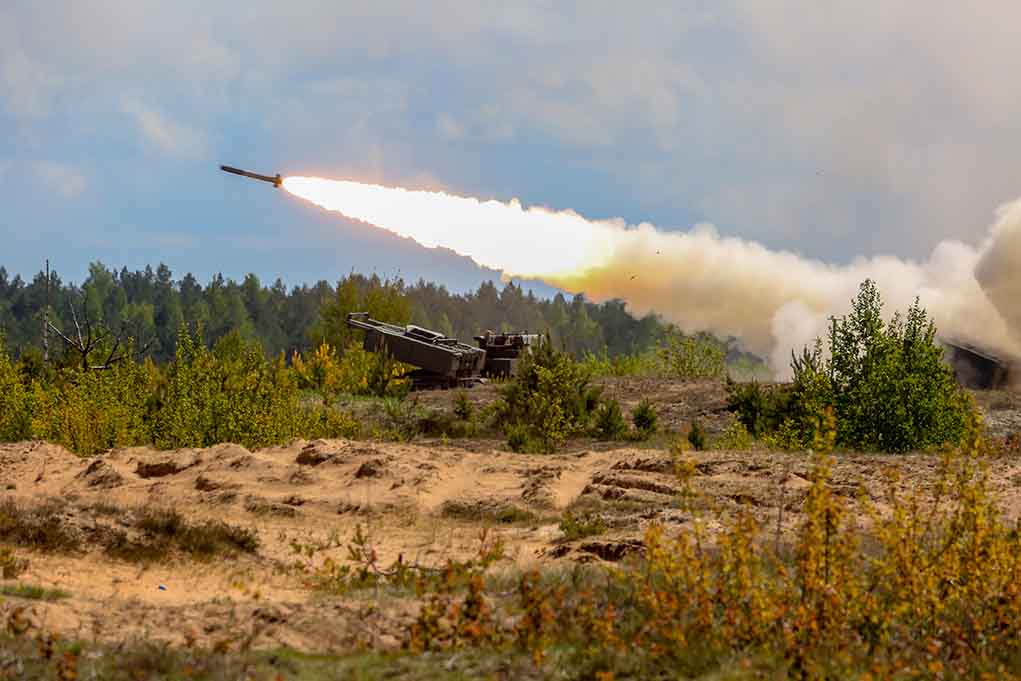
Poland scrambled fighter jets as Russia unleashed its most massive aerial assault of the Ukraine war, launching nearly 500 drones and missiles in a coordinated overnight strike that threatened to spill beyond Ukrainian borders.
Key Takeaways
- Russia launched approximately 500 drones and missiles in its largest aerial assault on Ukraine since the war began, targeting military airfields near the Polish border
- Ukrainian air defenses successfully intercepted 460 out of 479 drones and 19 out of 20 missiles, preventing major casualties despite the unprecedented scale of the attack
- Poland activated its fighter jets and placed air defenses on “highest state of readiness” as the massive strike approached NATO borders
- The assault appears to be retaliatory for Ukraine’s recent drone strikes on Russian airbases and represents a significant escalation in aerial warfare
- Despite the impressive defensive performance, 17 locations in Ukraine suffered damage, including medical facilities in Odesa
Unprecedented Scale of Attack
Russia’s massive overnight assault involved approximately 500 missiles and drones, representing the most significant aerial attack since the conflict began. Ukrainian air defense systems demonstrated remarkable effectiveness despite the overwhelming barrage, successfully neutralizing 460 out of 479 drones and 19 out of 20 missiles. The primary target appeared to be a military airfield in Dubno, located dangerously close to Ukraine’s border with Poland, suggesting a deliberate escalation that risked drawing NATO directly into the conflict. Though Ukrainian defensive measures prevented catastrophic damage, at least 17 locations throughout the country reported impacts from successful strikes or falling debris.
The timing of this massive assault appears directly linked to Ukraine’s recent drone strikes on Russian airbases, with the Kremlin openly acknowledging the retaliatory nature of the operation. Russian presidential spokesman Dmitry Peskov confirmed the attack was in response to Ukraine’s earlier strikes, stating, “Without a doubt that is part of it.” This tit-for-tat escalation demonstrates both sides’ increasing willingness to target strategic military assets deep behind enemy lines, potentially signaling a new and more dangerous phase of the conflict where restraints on long-range strikes are increasingly abandoned.
NATO Response and Polish Activation
The unprecedented scale of Russia’s assault triggered immediate defensive measures from neighboring NATO countries. Poland’s Operational Command of the Armed Forces in Warsaw confirmed the activation of “Polish and allied” fighter jets in response to the threat, placing its air defense systems on “highest state of readiness” as the massive wave of Russian drones and missiles approached the alliance’s eastern flank. This rapid military response underscores the growing concern that Russia’s increasingly aggressive aerial campaign risks dragging NATO directly into the conflict through miscalculation or deliberate provocation.
“The main strike was targeting … one of the operational air fields. There are some hits.” said Yuriy Ihnat.
The Polish activation was described as “preventative” in nature, highlighting the tension along NATO’s eastern borders as the conflict intensifies. Previous incidents where Russian missiles have strayed into Polish airspace have demonstrated the real risk of unintended escalation. While no breach of Polish airspace occurred during this massive assault, the proactive defensive stance taken by Warsaw reveals the high stakes involved as Russia continues to push the boundaries of conventional warfare in its campaign against Ukraine, with each massive strike increasing the chances of a wider European conflict.
The New York Times reports that while battle damage assessments for Ukraine’s large-scale drone attack Sunday against airbases in Russia, dubbed Operation Spiderweb, are still being conducted by U.S. and European officials, it is estimated that as many as 20 long-range strategic… pic.twitter.com/deC4f4F3JF
— OSINTdefender (@sentdefender) June 3, 2025
Civilian Impact and Infrastructure Damage
Despite Ukraine’s remarkable defensive performance, the sheer volume of the attack resulted in significant damage to civilian infrastructure. In Kyiv, air defense systems engaged multiple targets over the capital, with fires and drone debris reported across various districts. Tymur Tkachenko reported, “A residential building is on fire in the Shevchenkivskyi district. A woman is injured and is being treated.”
“So today, more than ever, it is necessary to be united… This night was difficult, but thanks to the incredible work of the Defense Forces, we managed to minimize casualties,” Tkachenko added, highlighting the effectiveness of Ukraine’s defensive measures despite the unprecedented scale of the attack.
In Odesa, medical facilities bore the brunt of the assault, with Odesa Governor Oleh Kiper confirming that “The administrative building of an emergency medical station was also completely destroyed. There is a fire at the scene. Ambulances are damaged. There are no injuries among the personnel.” This deliberate targeting of medical infrastructure represents yet another escalation in Russia’s increasingly indiscriminate campaign against Ukraine’s civilian population and essential services. Meanwhile, as the aerial assault raged, President Zelenskyy announced the beginning of what could be the largest prisoner exchange of the war, stating, “Today’s exchange has begun. It will be done in several stages in the coming days.”












